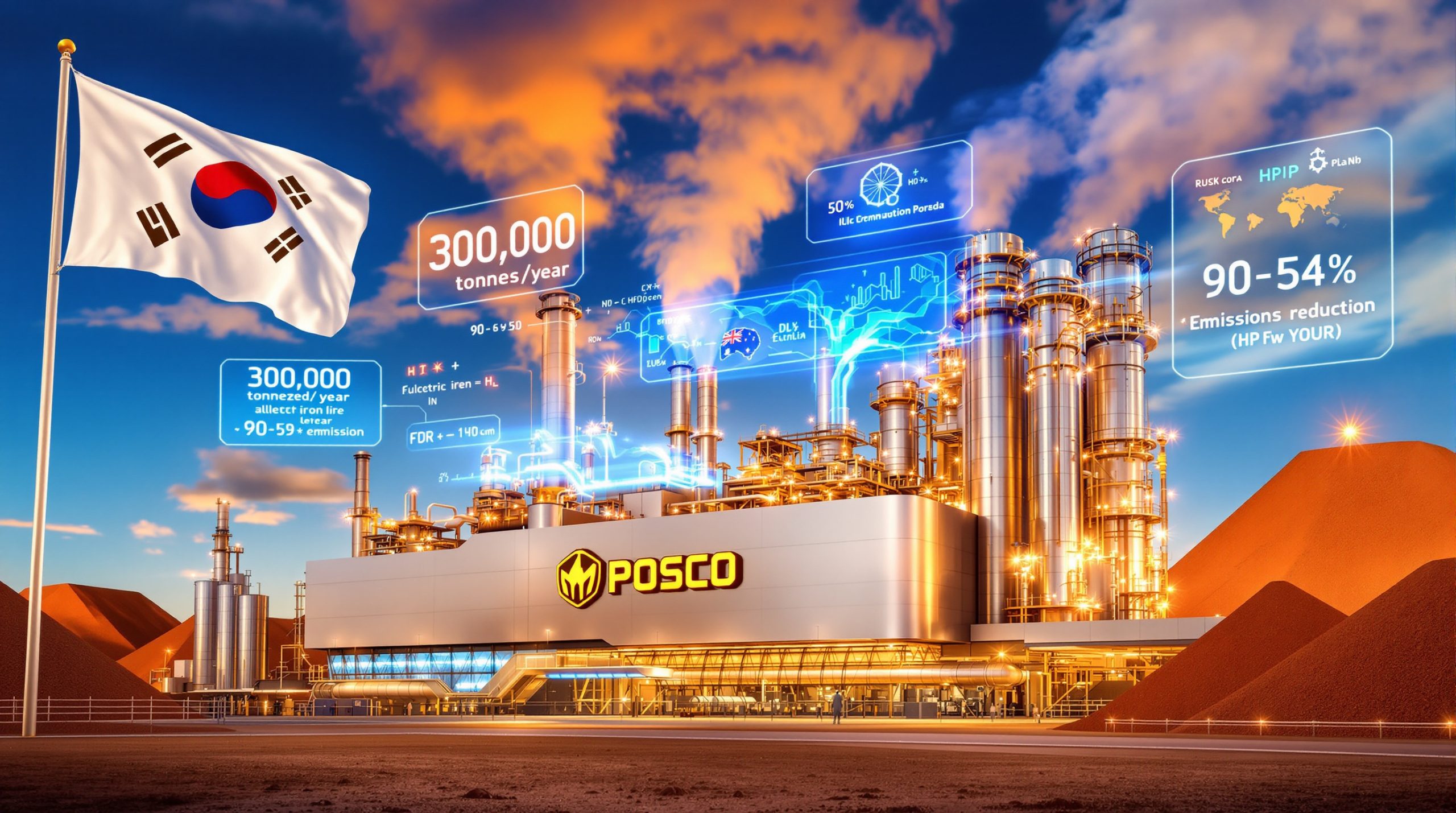What is Driving Lynas' NdPr Production Increase?
Recent Production Performance
Lynas Rare Earths delivered remarkable results in the March 2025 quarter, producing 1,911 tonnes of rare earths oxide (REO), with NdPr production reaching 1,509 tonnes—a significant 16.7% increase from the previous quarter. This production boost comes at a strategic time as global markets face supply constraints and geopolitical tensions reshape trade flows. The company reported sales revenue of $123 million with sales receipts of $124.6 million, demonstrating strong market demand for its products.
The average selling price increased to $50.5/kg during the quarter, reflecting Lynas' strategic focus on high-value customers and its unique position as a major non-Chinese supplier. This pricing power stems from the company's ability to offer supply chain security at a time when manufacturers are actively diversifying their rare earths sourcing strategies away from Chinese dependence.
Mt Weld Operations Improvements
The solid concentrate production volumes from Lynas' Western Australia operations have been instrumental in supporting the company's growth trajectory. The Mt Weld mine serves as the cornerstone of Lynas' vertically integrated business model, providing critical feedstock to processing facilities in Kalgoorlie and Malaysia.
A key contributor to the recent production success has been the dewatering circuit implemented as part of the Stage 1 expansion. This technological enhancement has delivered dual benefits: reducing processing costs by approximately 8% while simultaneously improving concentrate quality. The reduced moisture content has optimized material handling and transportation efficiency, creating operational advantages throughout the supply chain.
The Stage 2 expansion at Mt Weld is progressing according to schedule, with commissioning expected in Q1 of the 2025-26 financial year. This expansion will significantly increase the site's production capacity, positioning Lynas to meet growing global demand for rare earth materials outside the Chinese supply chain.
How is China's Export Policy Affecting the Rare Earths Market?
Recent Regulatory Changes
China's export restrictions took a decisive turn in April 2025 when the country added several rare earth elements to its export control list. This regulatory shift represents the latest development in an ongoing trade dispute, with export restrictions implemented in response to US tariffs initiated under President Trump's administration.
Perhaps most significantly, heavy rare earths (HRE) are now included in China's restricted export list, creating immediate supply challenges for industries reliant on these materials. As Amanda Lacaze, Lynas' CEO, observed, "The two-way flow of rare earth materials between US and China has ceased," highlighting the severity of the trade disruption.
Industry analysts note that China's control of approximately 90% of global HRE processing capacity gives it substantial leverage in global markets. By restricting exports, China appears to be protecting its domestic manufacturing base while simultaneously applying pressure in broader trade negotiations.
Market Restructuring Opportunities
The pause on Chinese exports of rare earths magnet materials containing HRE has created significant market disruption, but also presents strategic opportunities for non-Chinese producers like Lynas. Supply chain diversification has rapidly evolved from a theoretical concern to an urgent business imperative for manufacturers in sectors ranging from automotive to defense.
Market intelligence indicates that customers are actively reorganizing supply chains and agreements, seeking reliable alternatives to Chinese suppliers. This restructuring extends beyond simple sourcing changes to include technological adaptations and manufacturing process modifications to accommodate non-Chinese material specifications.
Industry experts suggest this disruption may lead to a sustained market restructure benefiting established non-Chinese producers with operational experience. Unlike previous export restrictions that were subsequently relaxed, the current geopolitical climate suggests these changes may represent a permanent shift in global rare earths trade patterns.
What New Production Capabilities is Lynas Developing?
Heavy Rare Earth Separation Circuit
In a significant technological milestone, Lynas has commenced commissioning of its new heavy rare earth separation circuit. This advanced processing facility represents a strategic expansion of the company's capabilities beyond its traditional focus on light rare earths like neodymium and praseodymium.
The company has already produced a small amount of holmium concentrate, demonstrating the operational viability of the system. Dysprosium (Dy) separation is currently underway with first production targeted for May 2025, while Terbium (Tb) production is expected to commence in June 2025.
These developments mark Lynas' entrance into high-value heavy rare earth markets that have historically been dominated by Chinese processors. The technical challenges of separating heavy rare earths are considerably greater than those for light rare earths, requiring sophisticated solvent extraction techniques and precise process control.
Strategic Significance
The commissioning of the heavy rare earth separation circuit positions Lynas as "the only commercial producer of separated heavy rare earth products outside China," according to CEO Amanda Lacaze. This unique market position carries significant strategic importance in the context of ongoing supply chain restructuring.
Industry analysts have identified exceptionally high demand for these products outside China, particularly in sectors subject to export restrictions. The pricing environment for non-Chinese heavy rare earths is notably favorable, with premiums of 20-30% compared to Chinese domestic prices.
Lynas has already initiated strategic engagement with target customers, particularly those in defense, automotive, and renewable energy sectors requiring secure, non-Chinese supply chains. The company's pricing strategy deliberately reflects ex-China demand dynamics rather than the China-based market index, recognizing the premium value of supply security in the current geopolitical environment.
What is Lynas' Position in the Global Rare Earths Supply Chain?
Unique Market Position
Lynas has established itself as the largest supplier of separated rare earths outside of China, a position that carries growing strategic significance as supply chain security concerns intensify. The imminent addition of Dysprosium and Terbium to its product range will further enhance the company's importance to Western supply chains.
The company's vertically integrated operations—spanning mining at Mt Weld, preliminary processing in Kalgoorlie, and separation in Malaysia—provide Lynas with exceptional control over its production processes and costs. This integrated approach contrasts with many competitors who rely on third parties for critical production stages.
Lynas is ideally positioned to contribute to supply chain diversification efforts being undertaken by governments and manufacturers in North America, Europe, and Japan. The company's established production history provides credibility that many emerging rare earths ventures lack, making it a preferred partner for strategic industries.
US Project Considerations
Lynas is currently reviewing potential cost implications for its planned Seadrift project in Texas. This facility, intended to process heavy rare earths for the US market, faces evolving economic considerations in light of recent tariff changes and trade tensions.
The strategic importance of establishing rare earths production capacity in the US remains high, despite these challenges. US government initiatives, including critical minerals security programs and potential defense contract opportunities, continue to provide incentives for domestic processing capability development.
Market analysts suggest that while short-term costs may increase due to tariffs on imported equipment and materials, the long-term strategic value of a US-based facility has potentially increased due to growing concerns about supply chain resilience.
FAQ About Lynas and Rare Earths Production
What are NdPr and why are they important?
Neodymium (Nd) and Praseodymium (Pr), collectively known as NdPr, are critical rare earth elements essential for manufacturing the high-performance permanent magnets used in electric vehicles, wind turbines, and various electronic devices. These magnets, known as NdFeB (Neodymium-Iron-Boron) magnets, generate the strongest magnetic fields of any commercially available magnet type.
A typical electric vehicle contains approximately 1-2 kg of NdPr in its motor, while a 3 MW wind turbine may require up to 600 kg of these materials. The growing demand for NdPr is primarily driven by the global energy transition, with electric vehicle production expected to increase by 25-30% annually through 2030.
The limited supply sources outside China increases the strategic importance of NdPr, with only a handful of companies capable of producing separated NdPr at commercial scale. This supply-demand imbalance underpins favorable pricing dynamics for established producers like Lynas.
How does the US-China trade tension impact rare earths markets?
The escalating trade tensions between the US and China have created significant disruptions in rare earths markets, creating both challenges and opportunities for market participants. Supply chain disruptions and uncertainty have become the new normal, with manufacturers scrambling to secure reliable access to these critical materials.
Price increases for rare earth materials have been a direct consequence of these tensions, with some elements seeing 40-50% price jumps following export restriction announcements. This volatility complicates planning for manufacturers but creates revenue opportunities for established non-Chinese producers.
The geopolitical situation has accelerated efforts to develop non-Chinese supply sources, with governments in the US, Europe, Japan, and Australia implementing policies to support domestic rare earths projects. These initiatives include direct funding, tax incentives, and regulatory streamlining to expedite project development.
Companies like Lynas with established production outside China are uniquely positioned to benefit from these market conditions. Their existing operational expertise and production capacity allow them to respond more quickly to market opportunities compared to greenfield projects that may require years of development.
What makes Lynas strategically important in the rare earths sector?
Lynas distinguishes itself as the only significant producer of separated rare earths outside China, giving it unique strategic importance in global supply chains. This position is particularly valuable as manufacturers and governments seek to reduce dependence on Chinese suppliers.
The company's vertically integrated business model from mining to processing provides exceptional quality control and supply chain security. Unlike many competitors who depend on third-party processors for critical steps, Lynas maintains control throughout the production process.
Lynas' expanding capabilities into heavy rare earths production further enhances its strategic profile. The addition of Dysprosium and Terbium to its product portfolio addresses critical supply gaps in defense and high-tech manufacturing sectors.
The company is well-positioned to support Western nations' supply chain security objectives, particularly as geopolitical investor strategies increasingly prioritize secure access to critical minerals. Lynas' operations in Australia and Malaysia, both politically stable jurisdictions aligned with Western interests, offer significant geopolitical advantages.
"Lynas' unique role as the largest supplier of separated rare earths ex-China, and the imminent addition of Dy and Tb to our product range, means that we are ideally positioned to contribute to supply chain diversification and to benefit from favourable market conditions," noted Amanda Lacaze, Lynas CEO.
Future Outlook for Lynas and Rare Earths Markets
Production Expansion Plans
Lynas' Mt Weld expansion is progressing according to schedule, with Stage 2 commissioning expected in Q1 2025-26. This expansion will significantly increase the company's production capacity, supporting its growth strategy in both light and heavy rare earth markets.
The company's heavy rare earths production capabilities are coming online in mid-2025, with Dysprosium expected in May and Terbium in June. These new product lines will diversify Lynas' revenue streams while addressing critical supply chain gaps in Western markets.
Lynas continues to focus on its highest value strategic customers, prioritizing long-term relationships with manufacturers in sectors requiring consistent, high-quality rare earth supplies. This customer-centric approach has supported strong pricing even during periods of market volatility.
Industry analysts project potential for increased production volumes and an expanded product range through 2026-27, supported by growing market demand and Lynas' established operational expertise. The company's capital investment program remains focused on high-return expansion opportunities aligned with market growth.
Market Dynamics and Opportunities
Supply chain restructuring in response to geopolitical tensions is creating sustained demand for non-Chinese rare earth sources. This structural shift appears likely to persist regardless of potential future trade policy adjustments, as manufacturers prioritize supply security.
Growing applications in green technology continue to drive overall market growth, with projections suggesting 8-10% annual demand increases for NdPr through 2030. Electric vehicles remain the primary growth driver, supplemented by expanded wind energy deployment and advanced electronics applications.
Trade tensions between major economies are likely to maintain a favorable pricing environment for non-Chinese producers. The premium for "secure" supply chains has become a permanent feature of the market, benefiting established producers with reliable operations in politically stable jurisdictions.
The strategic importance of rare earths in technology and defense applications continues to increase, supporting government initiatives to develop domestic supply chains. These policy interventions, including direct subsidies and preferential purchasing programs, create additional market opportunities for companies like Lynas with established production capabilities outside China.
In the current environment, investors looking for exposure to critical minerals might consider investing in mining stocks with rare earth operations. Furthermore, the ongoing commodity super cycle is creating favorable conditions for companies implementing mining technological innovations that improve efficiency and reduce environmental impact.
Want to Spot the Next Big Mineral Discovery Before Everyone Else?
Discovery Alert's proprietary Discovery IQ model analyses ASX announcements in real-time, delivering instant notifications on significant mineral discoveries like those in the rare earths sector. Visit our discoveries page to see how early investors in major mineral finds have historically achieved substantial returns.




